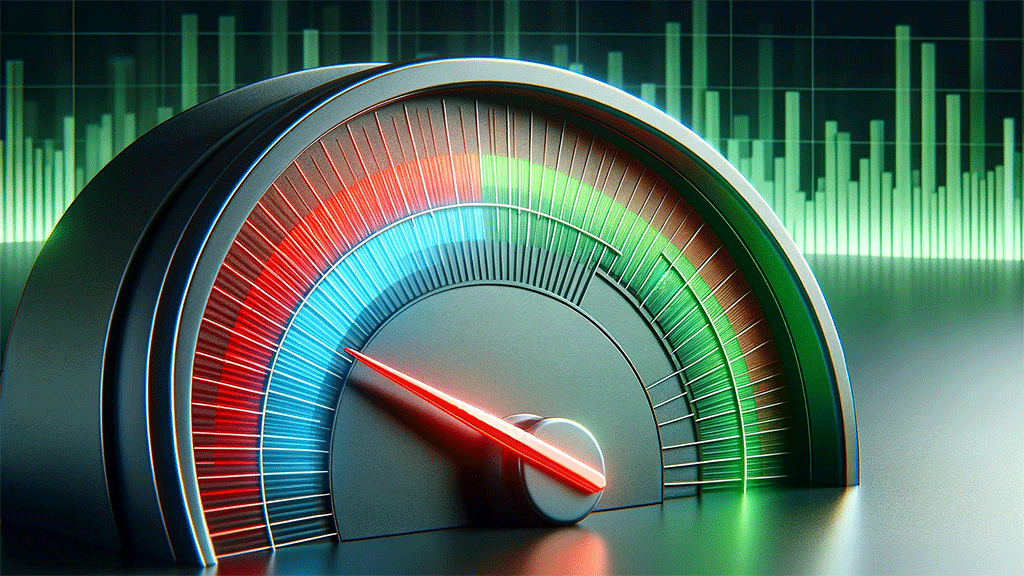“Instead of interrupting, work on attracting.“
~ Dharmesh Shah
Welcome to the world of email marketing trailhead! If you're here, it's probably because you understand the power of a well-crafted email list. It's not just a collection of email addresses; it's a thriving community that likes to hear from you, learn about your products, or engage with your services. In this post, we'll have a look at the ins and outs of building and managing an effective email list – quite literally, a valuable element in the toolbox of any digital marketer.
Whether you're starting from scratch or looking to revamp an existing list, this hike is for you. We'll cover some of the nuances of crafting a list that not only grows in size but also in engagement and effectiveness. From leveraging the latest techniques in list building to mastering the art of list management, we've got you covered. So, let's head out and unlock the full potential of your email marketing efforts.
Key Takeaways
- Leveraging Social Media: Utilize social media platforms to promote newsletters and encourage sign-ups, ensuring consistency in messaging.
- Converting Sales to Subscribers: Incorporate subscription options during checkout or post-purchase follow-ups to convert one-time buyers into long-term subscribers.
- Utilizing Various Channels: Integrate sign-up options across different channels to attract a wider audience and add value.
- Email List Segmentation and Personalization: Organize contacts into segments and tailor content to match subscribers' interests and preferences.
- Maintaining Subscriber Engagement: Send regular updates while avoiding over-saturation, and implement re-engagement campaigns for inactive subscribers.
- Optimizing Email Content: Conduct A/B testing and analyze responses to refine email strategies for maximum performance.
- Improving Email Deliverability: Maintain sender reputation, utilize authentication protocols, and monitor engagement metrics to ensure emails land in subscribers' inboxes.
- Email Automation: Implement drip campaigns, trigger-based emails, and personalized automation to enhance effectiveness.
- List Hygiene and Maintenance: Regularly clean lists, update subscriber information, and ensure compliance with regulations for effective email marketing.
- Using Email Analytics: Track KPIs, respond to data insights, and adjust strategies accordingly to improve engagement.
- Subscriber Engagement and Content Strategy: Maintain a consistent email schedule, adjust to subscriber preferences, and craft engaging content to foster brand connection.
- Welcome and Onboarding Strategies: Guide new subscribers through onboarding emails, encourage interaction, and set the tone for a lasting relationship.
- Testing and Optimization: Conduct A/B testing, analyze results, and tailor strategies to different audience segments for continuous improvement.
Basics of Building an Email List
Leveraging Social Media: First of all… you should be social. Your social media platforms are like loudspeakers for your email list. Use them to announce your newsletter, share snippets of what subscribers can expect, and provide a direct link to sign up. Remember, consistency is key — a regular post about your newsletter keeps the idea fresh in your followers' minds.
Convert Sales to Subscribers: This is about turning one-time buyers into long-term subscribers. During the checkout process, you could include a simple checkbox for customers to join your email list. Or, in your post-purchase thank-you email, include an option to subscribe. It's an effective way to keep the conversation going beyond the sale.
Building an email list isn't just about adding as many emails as you can. It's about finding people who are genuinely interested in what you have to say and what you have to offer.
Utilizing Various Channels
Using multiple channels to grow your email list is about being where your audience is and making it easy for them to join your community. Here are a few ideas about using channels to attract a wider audience to your email list, ensuring that you're not just increasing numbers but also adding value to both your audience and your business.
- Integrate with Social Media: Start by adding a sign-up button on your Facebook page. It's a simple yet effective way to guide your followers to your email list. For Instagram, consider using the ‘link in bio' feature to direct followers to a sign-up landing page. In your posts and stories, mention the benefits of subscribing to your newsletter, like exclusive content or early access to sales.
- Incentivize Subscriptions During Sales: Imagine this scenario: a customer is about to complete a purchase on your website. Just before they check out, a pop-up appears offering a 10% discount on their next purchase if they subscribe to your newsletter. This method can effectively turn a one-time transaction into a lasting relationship. Be sure to test the mechanics of the checkout flow on this to ensure this process is smooth and doesn't disrupt the checkout experience.
- Content Marketing and Lead Magnets: Create a valuable piece of content, such as a comprehensive guide or an exclusive video tutorial, that your audience would find beneficial. Then, promote this content across your platforms with a clear message: Get this free guide by signing up for our newsletter.Be sure that the content is genuinely useful and relevant to your audience's interests. For example, if youare in the gardening business, a guide like “My Top 10 Secrets to a Lush Garden” can be a lead magnet.
Email List Segmentation and Personalization
Once your email building has gained some traction, the next step is to manage it effectively. Segmentation and personalization are keys.
- Segmentation: This is like organizing your contacts into different circles. For example, you can have a segment for those who signed up through your latest webinar, another for customers who bought a specific product, and so on. Use the data you have on subscriber behavior and preferences to create these segments. Most email marketing platforms offer tools to do this easily. For instance, you can create segments based on location, purchase history, or even how often they interact with your emails.
- Personalization: This goes beyond just adding a subscriber's name to the email. Tailor your content to match the interests and needs of each segment. For example, if you have a segment of subscribers who frequently purchase books from your website, send them emails about your latest book arrivals or exclusive author interviews. The key here is relevance; the more relevant your emails are to a subscriber, the higher the chances of engagement.
Maintaining Subscriber Engagement
Needless to say, when building an email list, keeping your subscribers engaged is critical to the health of your email list.
- Regular Content Updates: Consistency is a good thing. Send regular updates to keep your subscribers informed and engaged. But… be careful not to fatigue them with too many. Find a balance in frequency, perhaps a weekly newsletter or bi-weekly offers, depending on your audience's preferences.
- Re-engagement Campaigns: For subscribers who haven't interacted with your emails for a while, consider a re-engagement campaign. This could be a special offer, a we miss you message, or a survey asking for their feedback on why they're not engaging. The goal is to attempt to re-engage them and offer value.
Optimizing Email Content
Your email content should not only be engaging… for sure… but also optimized for maximum performance as well. Effective management of your email list involves understanding and responding to the needs and interests of your subscribers. It's a continuous process of learning and adapting to ensure that your emails remain a welcome sight in their inboxes.
- A/B Testing: This is like conducting a mini-experiment. Send two versions of the same email with one variation (different subject lines are always a good place to start) to a small segment of your list and see which performs better. Use the insights gained from these tests to refine your email strategy.
- Analyzing Responses: Pay attention to how subscribers interact with your emails. Which types of content get the most opens or clicks? Are there certain topics that drive more engagement? Use this data to tailor future emails and ensure they hit the mark with your audience.
Improving Email Deliverability
Not to overstate the obvious here, but… ensuring your emails consistently land in your subscribers' inboxes is crucial, so here are a couple of quick points to keep front of mind:
- Maintain Sender Reputation: Your sender reputation is like your credit score in the world of email marketing. Keep it high by avoiding spammy behavior, like sending too many emails too quickly or to purchased lists. Regularly clean your list to remove unengaged subscribers.
- Authentication Protocols: Use protocols like SPF (Sender Policy Framework), DKIM (DomainKeys Identified Mail), and DMARC (Domain-based Message Authentication, Reporting, and Conformance). These are like ID verifications for your emails, ensuring that they're recognized as legitimate and not spam. Most email marketing platforms can help you set these up.
- Monitor Engagement Metrics: Pay attention to your open rates, click-through rates, and unsubscribe rates. If you notice a dip in these metrics, it might be time to tweak your content or re-evaluate your sending frequency.
Some Email Automation Tips
Email automation makes your life so much easier and your email marketing so much more effective. When done right, it can significantly boost the effectiveness of your email marketing by ensuring and properly timing your emails and relevant communication with your subscribers.
- Drip Campaigns: These are automated emails sent out at specific intervals or based on specific actions taken by the subscriber. For example, a welcome email sequence that starts when someone signs up, followed by emails that gradually introduce your services or products.
- Trigger-Based Emails: These are emails automatically sent based on specific subscriber actions. For instance, if a subscriber adds a product to their cart but doesn't check out, an automated email can remind them to complete their purchase.
- Personalization and Segmentation in Automation: Even in automation, personalization matters. Use the data you have on your subscribers to send automated emails that are relevant to them. For instance, if someone signed up for your list from a page about vegetarian recipes, automate a series of emails featuring such recipes.
List Hygiene and Maintenance
Maintaining the health of your email list is as important as growing it. Hygiene and maintenance are essential for the long-term success of your email marketing efforts. By keeping your list clean and using data to guide your strategy, you greatly enhance your odds that your email campaigns remain effective and engaging.
- Removing Inactive Subscribers: When building an email list, it's essential to periodically remove subscribers who haven't engaged with your emails for a long time. This not only improves your engagement rates but also your sender reputation. Think of it as pruning dead branches to help the rest of your tree flourish.
- Updating Subscriber Information: Occasionally, ask your subscribers to update their preferences and contact information. This ensures that your list remains relevant and that you are sending emails that align with their current interests and needs.
- Compliance with Regulations: Be mindful of regulations like GDPR. Make sure your subscribers have explicitly opted in to receive your emails and provide clear options for unsubscribing. This isn't just legal compliance; it's also about respecting your subscribers' choices.
Using Email Analytics
- Track Key Performance Indicators (KPIs): Keep an eye on metrics like open rates, click-through rates, and bounce rates. These indicators give you insights into the health of your list and the effectiveness of your content.
- Responding to Data: If certain emails have low open rates, investigate why. Maybe the subject line needs tweaking, or the send time could be optimized. Use analytics as a guide to continually refine your email strategy.
Subscriber Engagement and Content Strategy
Engaging your subscribers with helpful content is key to any successful email marketing strategy. Doing so is an art, and it keeps your audience informed, entertained, and, more importantly, connected to your brand.
- Regular Email Schedule: Maintaining a consistent emailing schedule helps set expectations with your subscribers. Whether it's a weekly newsletter or monthly updates, consistency keeps your brand at the top of their minds. However, it's crucial to find the right balance. If you have too few emails, you might be forgotten, or if you have too many, you risk annoying your subscribers.
- Adjusting to Subscriber Preferences: Pay attention to when your subscribers are most likely to open and engage with your emails. This might vary based on your audience demographic or the nature of your content. Some experimentation and analysis of engagement patterns can help you determine the best times to send out your emails.
Welcome and Onboarding Strategies
A strong start can set the tone for a lasting relationship with your subscribers. Well-crafted welcome and onboarding emails are a staple when it comes to building a strong foundation with your subscribers. Setting the right tone helps to build a relationship that sets the foundation where a longer-term engagement can grow.
- Guiding New Subscribers: Think of your onboarding emails as a guided tour of your brand or services. Over a series of emails, introduce new subscribers to key aspects of your business. For example, one email could showcase your bestselling products, another could share your company's story, and a third could highlight customer testimonials.
- Engagement and Interaction: Encourage interaction in your onboarding emails. Ask new subscribers to follow you on social media, invite them to a webinar, or encourage them to provide feedback. This type of engagement helps solidify their connection to your brand and can provide key insights into their preferences.
Testing and Optimization
The final step in building an email list comes in the form of continuously testing and optimizing your list as you gain more and more data and feedback from it. After all, testing and optimization are about understanding your audience better and continuously improving your email marketing efforts to keep them engaged and interested in your brand.
A/B Testing and Performance Tracking
- Experiment with A/B Testing: As we touched on earlier, A/B testing, or split testing, is a method where you compare two versions of an email to see which performs better. This could involve testing different subject lines, email designs, or calls to action. For example, you might send one version of an email with a humorous subject line and another with a more straightforward subject line to see which yields higher open rates.
- Analyzing Results: Use the data from your A/B tests to inform your future email campaigns. Keep track of your email marketing metrics like open rates, click-through rates, and conversion rates. This data can reveal what resonates with your audience and what doesn't, allowing you to refine your strategy over time.
Action Plans for Specific Audience Segments
- Tailor Strategies to Different Segments: Your email list is diverse, and different segments may respond better to different types of content or messaging. For instance, long-time customers might appreciate loyalty rewards or insider information, while new subscribers might be more interested in introductory offers or educational content about your products or services.
- Continuous Improvement: Email marketing is not a set-and-forget strategy. It requires ongoing attention and adjustment. Regularly review your email campaign performance, and don't be afraid to try new approaches or tweak existing ones. Stay updated with the latest email marketing trends and best practices, and be willing to adapt your strategy as needed.
When it comes to building an email list, each step of the way, from crafting your initial list to continuously refining and optimizing your strategy, is important in creating a successful email marketing campaign. Remember, the key is always to remain adaptable and responsive to your audience's needs and preferences.
FAQs on Building an Email List

See you out there!



